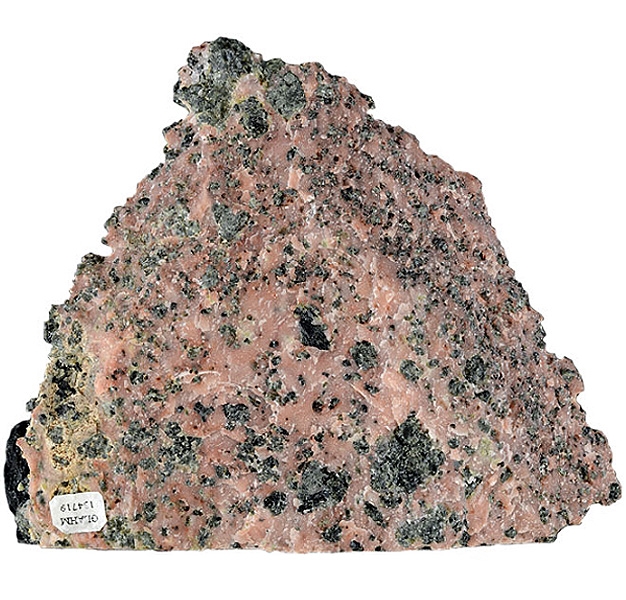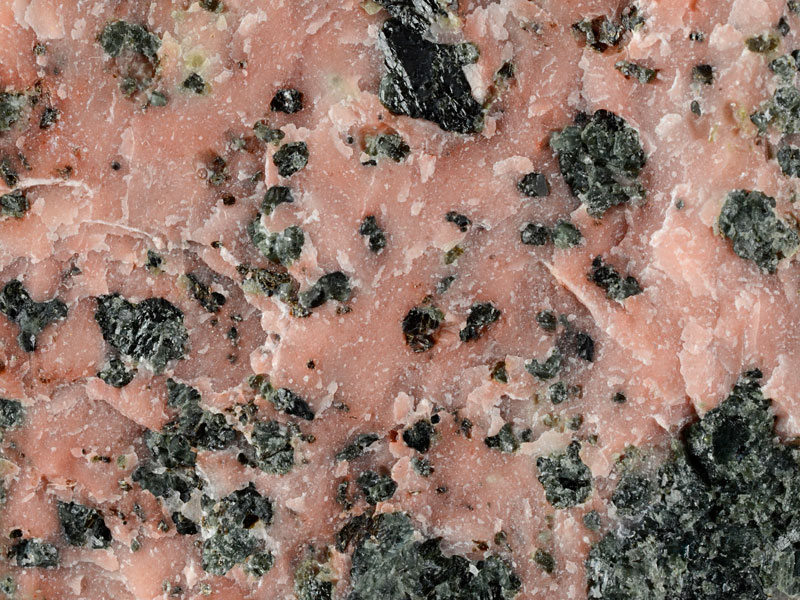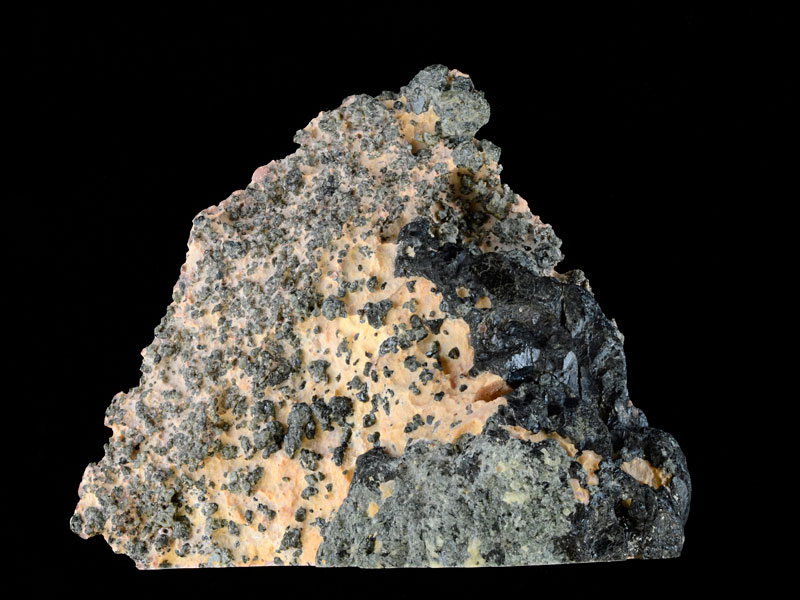
Fact sheet
This silicate-rich marble of the Lewisian group was originally deposited as a limestone in the Late Archean. It has been subjected to granulite-grade metamorphism at temperatures reaching 800 °C and depths of around 30 km during the Laxfordian orogeny. Although the island of Tiree is dominated by biotite-hornblende gneiss, there are several bands of garnet-biotite schists, siliceous schists, calc-silicate rocks and marbles representing metasedimentary rocks. This marble is one of several prominent pink-coloured bands that have been used as a decorative stone.
In thin section, the sample can be seen to contain abundant rounded and sometimes deformed dark crystals of pyroxene (diopside) and hornblende within a fine-grained crystalline carbonate groundmass. The thin section sample was contributed by David Anderson (a collector based in Girvan) and the hand specimen comes from the Hunterian Museum (Glasgow University).
The United Kingdom Virtual Microscope (UKVM) collection consists of igneous, sedimentary and metamorphic rocks from around the UK.
It is intended as a teaching resource, helping to tell the story of the common rock types and how they form, and reflecting the history of the UK at the margins of the continent of Europe. The collection is a series of teaching sets, for example igneous rocks from the North Atlantic Igneous Province and SW England; high-temperature metamorphic rocks from Scotland and low-temperature metamorphic rocks from Wales; and sedimentary rocks, including English limestones and sandstones.








